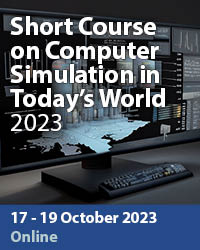Potential Dangerous Object Detection On Railway Ballast Using Digital Image Processing
Price
Free (open access)
Transaction
Volume
88
Pages
10
Published
2006
Size
683 kb
Paper DOI
10.2495/CR060161
Copyright
WIT Press
Author(s)
P. L. Mazzeo, E. Stella, M. Nitti & A. Distante
Abstract
The correct assessment of the condition of a railroad requires the consideration of different factors. Some factors, such as the condition of the ties, can be measured by inspecting features visible from the surface of the railway. Other factors include the condition of the ballast; it is important to recognize the critical situation in which any foreign object can be present on the ballast. These kinds of objects could be cans, pieces of sheet and everything over a well determined dimension. Extensive human resources are currently applied to the problem of evaluating railroad health. The proposed visual inspection system uses images acquired from a digital line scan camera installed under a train. Here we focus on the problem of foreign object detection in the railway maintenance context. To obtain this aim we train a Multilayer Perceptron Network (MLPN) with the edge histogram of the ballast patches manually extracted from the acquired digital image sequence. The general performances of the system, in terms of speed and detection rate, are mainly influenced by the adopted features for representing images and by their number. By this inspection system it is possible to aid the personnel in railway safety issues because a high detection rate percentage has been obtained. We show the adopted techniques by using images acquired in real experimental conditions. Keywords: obstacle detection, ballast inspection, neural networks. 1 Introduction Inspection of the rail state is one of the basic tasks in railway maintenance. In the last few years a large number of methods have been proposed by the computer vision community for facing the problem of visual inspection [1, 2]. The
Keywords
obstacle detection, ballast inspection, neural networks.





